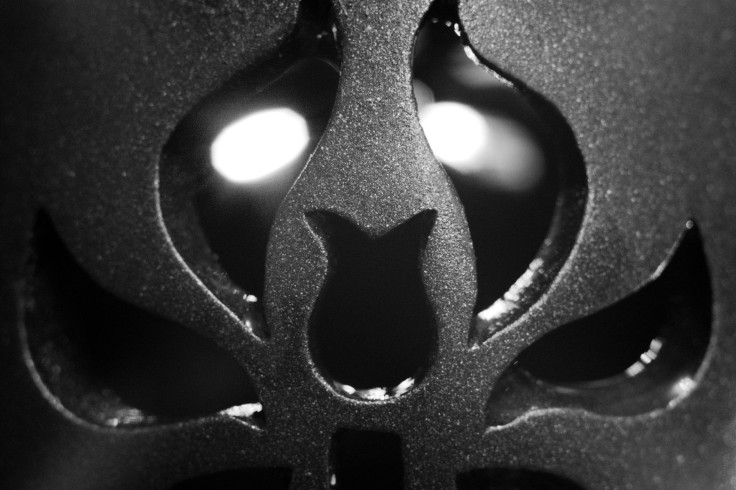Halloween 2015: Pareidolia And The Science Behind Seeing Monsters In The Dark

With the ghastly specter of Halloween approaching us this week, Medical Daily will be exploring the science behind some of the more terrifying experiences in our day-to-day lives via a mini-series of articles. Enjoy!
Monsters In The Dark
It’s a dark and foreboding night out in the woods (of course). You’ve ventured out into the unfamiliar backcountry this weekend because your romantic partner insisted on a secluded get-together under the stars. Or maybe because one of your old college friends desperately wanted to host a reunion at their uncle’s remote cabin. Who knows, it could just be the start of camp at Crystal Lake.
Regardless of the reason, you find yourself stirred awake in the middle of the first night there, so you decide to make the best of it and grab a smoke outside. That’s when you see it. Something animate out in the distance. Its true nature is impossible to ascertain through the skeletal trees stripped bare of any foliage, but it feels malicious. Its enlarged eyes glimmer an artificial yellow against a pitch black visage, and you see glimpses of a human-sized but outstretched frame — could it possibly have wings? You’re transfixed in fearful curiosity until the presence appears to move, at which point you can’t help but let out a primal scream that wakes everyone else up.
When you tell them about to the terrifying monster in your midst, your partner/friend/campmate sheepishly asks you to lead them to it. Cautiously approaching it, however, the aberration begins to transform into something much more mundane. It’s no monster at all — it’s your friend’s previously wet fall jacket hung up on an ever-swaying branch to dry. As for the unnaturally yellow eyes you swear you saw? Awkwardly placed reflective strips.
Oops.
Intent Where None Exists
Embarrassing as it might be to mistake a naturalistic coat rack for the second coming of Cthulhu, it’s really an error that anyone could make. That’s because people are fine-tuned to see signs of life everywhere they turn — even when they’re not there. It’s a phenomenon known as pareidolia, and everyone, including you, has been fooled by it.
Broadly speaking, pareidolia is the mistaken perception of familiarity when encountered with random visual or auditory information. As anyone who has played a wordsearch puzzle can attest to, we’re skilled at picking out patterns of intelligible data from a noisy background.
More than words, it’s faces and other markers of biology that people are especially eager to spot, and for good reason. Being able to catch wind of a predator or otherwise unwelcome living creature in a pile of rocks up ahead was once a life-saving talent, as was finding a friendly face. Pareidolia is the misfiring of that talent — finding “dog” in the random jumble of letters when it’s actually “doj” or the image of Jesus Christ in toast.
And it's not just bread. JC, being one of the most widely known figures in history, has been spotted in everything from trees to the rear of a dog. Elsewhere, pareidolia is partially behind some of the greatest supernatural phenomenon out there: from sightings of the Loch Ness monster and the Mothman (likely more owl than man) to a giant crab on Mars. On the audio side of things, pareidolia crops up in the scratchy (and edited) recordings of ghost hauntings known as electronic voice phenomenon (EVP), the hidden messages of a song run backwards, and the mysterious sounds of hell from Siberia.

If you're noticing a pattern here, don't worry. It's not an illusion. Everyone has experienced pareidolia, but research has shown that people who already believe in the supernatural, whether ghosts or the Holy Ghost, are more likely to see non-existent faces than their more skeptical counterparts.
Theory of Mind
One common theory for this tendency is partially that supernatural believers possess a more sensitive “theory of mind” (TOM), a complex interaction of mental processes that allow us to attribute agency to other beings — in other words, it's TOM that lets us assume our loved ones have thoughts and feelings of their own. It also explains why your friend can’t help but see purpose behind every yawn, stretch, and meow of their cats. And it's a poorer TOM that partially explains why people with autism spectrum disorders have trouble relating to others (they also tend to have less religious belief).
Sure enough, a 2014 Finnish study found that supernatural belief predicted a higher tendency to see intention behind the random movements of a 2D animation when compared to skeptics, and an accompanying fMRI scan of these test subjects as they saw the animations detected greater activation of the brain circuitries previously linked to TOM (found in the medial prefrontal cortex). “These findings provide evidence that differences in TOM-related activations are associated with supernatural believers’ tendency to interpret random phenomena in mental terms,” the authors concluded. It’s likely that an overactive TOM along with other well-known cognitive biases predisposes us to a paranormal mindset.
None of this means there’s anything wrong with seeing faces in the clouds or a bogeyman in the closet. The truth is, most of us do believe in the otherworldly.
But the existence of pareidolia should remind us to give our imagination the due credit it deserves before we jump to conclusions. Just being aware of the randomness of our mind and the reasons behind it allows us to look at the stranger things we encounter with a clearer head. And it might make it easier to separate the real and beautiful patterns of life from those created out of whole cloth.



























